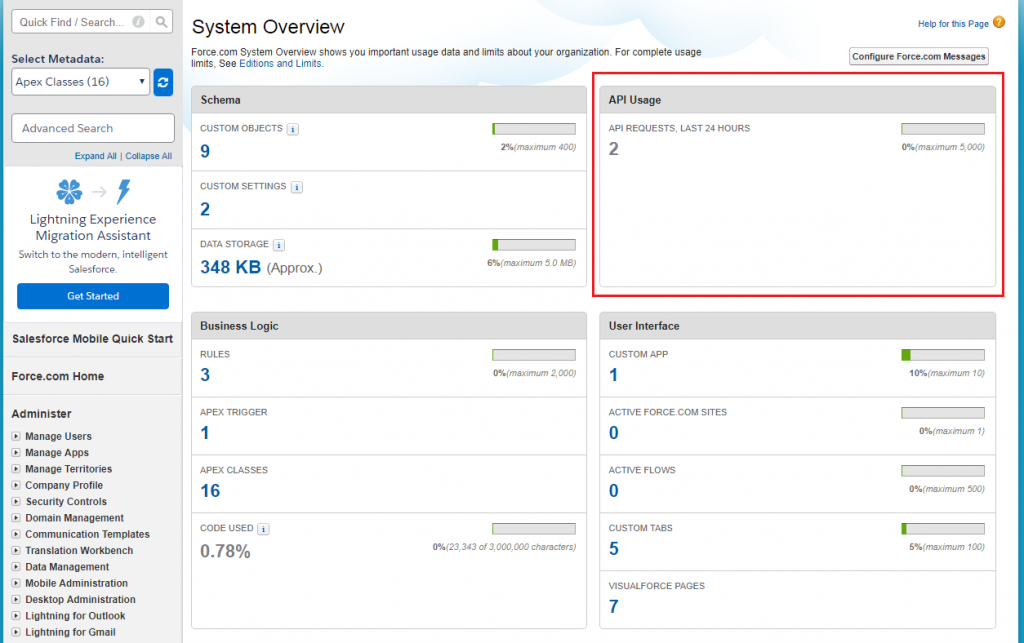Access the User’s Time Zone in a Formula Field
The solution takes advantage of a confusing inconsistency between two out of the box Salesforce functions, namely DATEVALUE and DATETIMEVALUE.
The first evaluates under the user’s timezone, while the latter evaluates as GMT. We can take advantage of this inconsistency and derive the user’s timezone as follows. Paste below code into a new numeric formula field named “UserTimezoneOffset”:
(DATEVALUE(DATETIMEVALUE(TEXT(TODAY())+" 00:00:00")) - TODAY()) + (DATEVALUE(DATETIMEVALUE(TEXT(TODAY())+" 01:00:00")) - TODAY()) + (DATEVALUE(DATETIMEVALUE(TEXT(TODAY())+" 02:00:00")) - TODAY()) + (DATEVALUE(DATETIMEVALUE(TEXT(TODAY())+" 03:00:00")) - TODAY()) + (DATEVALUE(DATETIMEVALUE(TEXT(TODAY())+" 04:00:00")) - TODAY()) + (DATEVALUE(DATETIMEVALUE(TEXT(TODAY())+" 05:00:00")) - TODAY()) + (DATEVALUE(DATETIMEVALUE(TEXT(TODAY())+" 06:00:00")) - TODAY()) + (DATEVALUE(DATETIMEVALUE(TEXT(TODAY())+" 07:00:00")) - TODAY()) + (DATEVALUE(DATETIMEVALUE(TEXT(TODAY())+" 08:00:00")) - TODAY()) + (DATEVALUE(DATETIMEVALUE(TEXT(TODAY())+" 09:00:00")) - TODAY()) + (DATEVALUE(DATETIMEVALUE(TEXT(TODAY())+" 10:00:00")) - TODAY()) + (DATEVALUE(DATETIMEVALUE(TEXT(TODAY())+" 11:00:00")) - TODAY()) + (DATEVALUE(DATETIMEVALUE(TEXT(TODAY())+" 12:00:00")) - TODAY()) + (DATEVALUE(DATETIMEVALUE(TEXT(TODAY())+" 13:00:00")) - TODAY()) + (DATEVALUE(DATETIMEVALUE(TEXT(TODAY())+" 14:00:00")) - TODAY()) + (DATEVALUE(DATETIMEVALUE(TEXT(TODAY())+" 15:00:00")) - TODAY()) + (DATEVALUE(DATETIMEVALUE(TEXT(TODAY())+" 16:00:00")) - TODAY()) + (DATEVALUE(DATETIMEVALUE(TEXT(TODAY())+" 17:00:00")) - TODAY()) + (DATEVALUE(DATETIMEVALUE(TEXT(TODAY())+" 18:00:00")) - TODAY()) + (DATEVALUE(DATETIMEVALUE(TEXT(TODAY())+" 19:00:00")) - TODAY()) + (DATEVALUE(DATETIMEVALUE(TEXT(TODAY())+" 20:00:00")) - TODAY()) + (DATEVALUE(DATETIMEVALUE(TEXT(TODAY())+" 21:00:00")) - TODAY()) + (DATEVALUE(DATETIMEVALUE(TEXT(TODAY())+" 22:00:00")) - TODAY()) + (DATEVALUE(DATETIMEVALUE(TEXT(TODAY())+" 23:00:00")) - TODAY())
This formula works because for every hour offset from GMT, the answer for “what day is today?” differs by one. In other words, the DATEVALUE of any literal hour of the day interpreted as GMT will be a day off from the user’s TODAY() based on their timezone setting on their User record. Adding together each of these discrepancies hour by hour ends up yielding the same answer as their timezone offset.
